Recently, I’ve found myself deeply engrossed in the world of countertops, and I’ve realized that I have a wealth of personal experience with various options. In the Beach Cabin kitchen, we have butcher block countertops. The lower-level dry bar showcases a beautiful quartzite surface. Meanwhile, the dresser that has been transformed into a vanity at the Beach Cabin features stunning quartz countertops. In our Colonial Home, we’ve enjoyed both polished and honed marble countertops. Earlier this summer, I had the opportunity to join friends in shopping for a new kitchen island countertop, where we learned quite a bit about quartz and dolomite. Continue reading to discover the conclusions I’ve drawn.
Note: The insights shared here are based solely on our personal experiences with these types of countertops. Different slabs may respond differently to wear and tear. For instance, while we’ve been able to easily wipe away coffee rings from our marble countertops after hours, this may not hold true for all marble slabs.
Countertop Options: Polished Marble
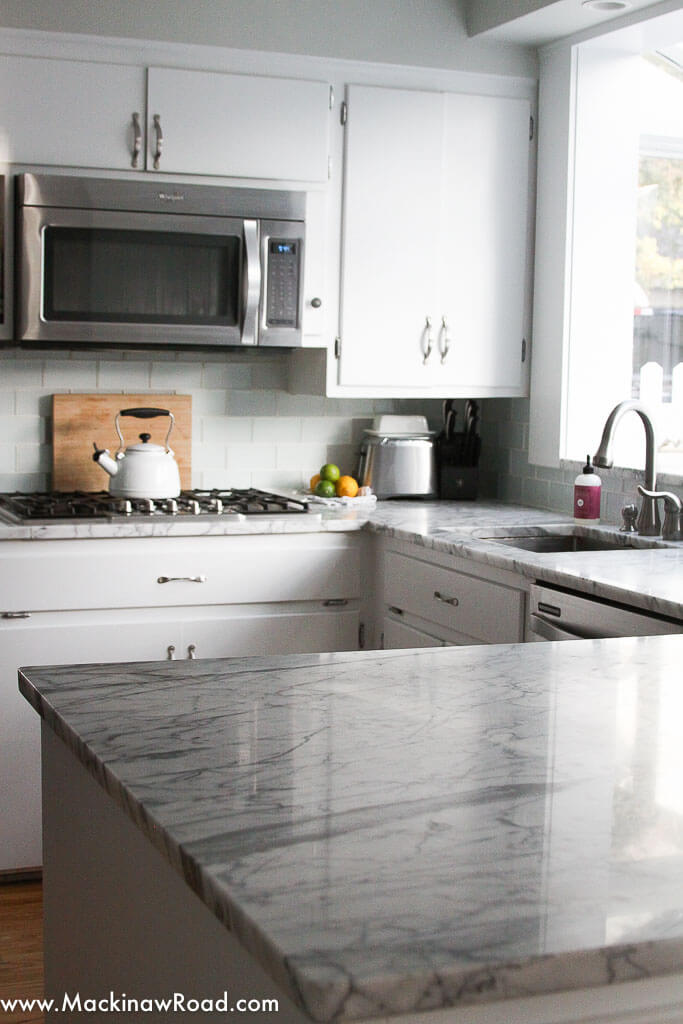
(Please excuse the older, grainy photos!) I’ll start by being completely honest: polished marble is absolutely gorgeous! It perfectly complements older homes — provided you take proper care of it. Our stone supplier barely suggested we try honed marble given our experience with polished marble. The reflective surface of polished marble is a real showstopper, creating a bright and airy kitchen atmosphere. However, it may not be the best choice for families with young children who frequently cook, host birthday parties, or mix citrus drinks. Without proper maintenance — such as resealing — polished marble can show signs of wear quickly, with etch marks, chips, and citrus stains being common issues.
Countertop Options: Honed Marble
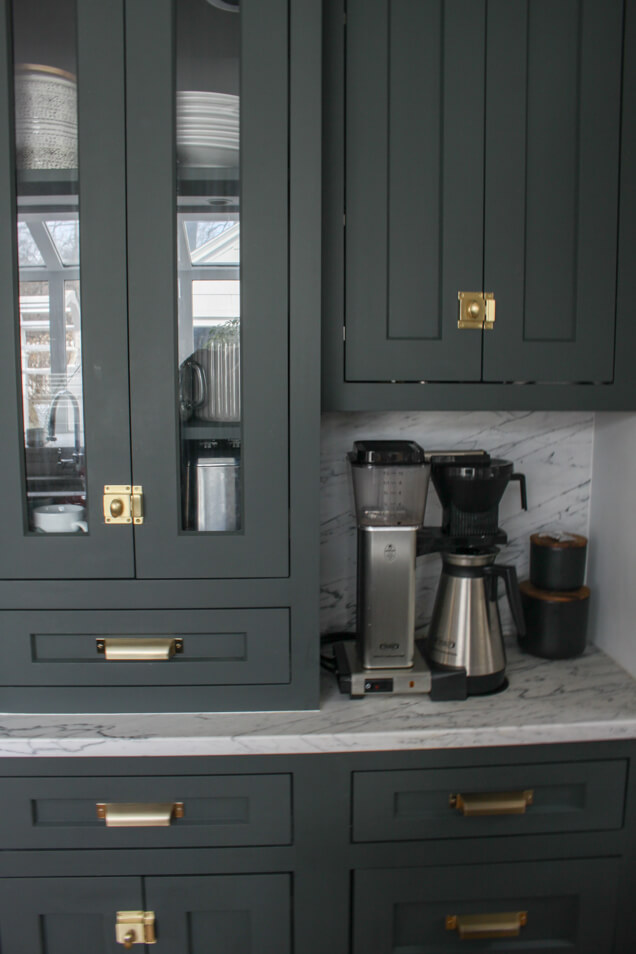
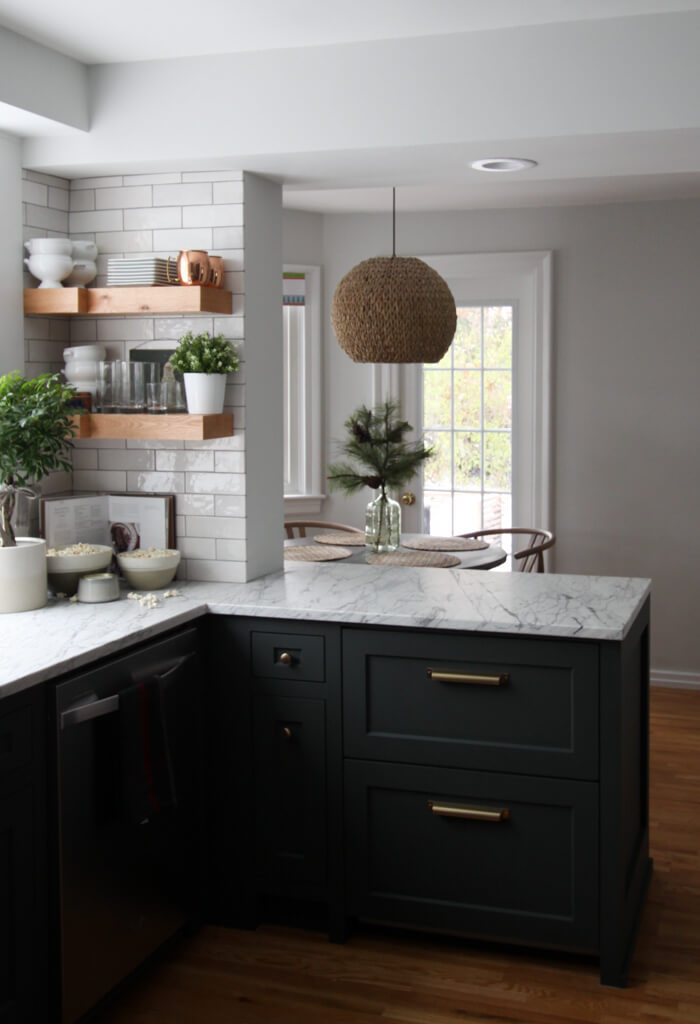
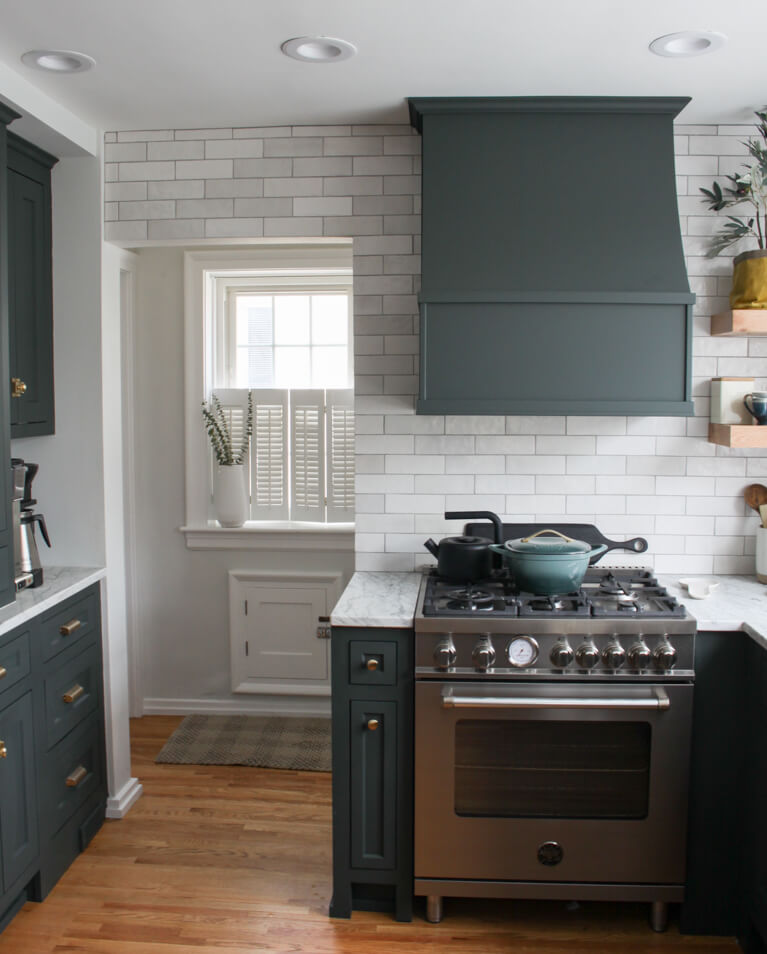
If you are enamored with marble (raises both hands), then honed marble is a far superior choice. The mistakes we’ve experienced can easily contribute to a desirable patina—except for citrus spills, which I promptly wipe up before they soak in. We’ve had red wine rings and coffee stains linger for hours, yet they clean up easily with soap and water. Chips can happen; for instance, the edge of the countertop may chip from a plate bumping against it, and sliding plates can lead to scratches. While marble can seem high maintenance, there’s a compelling counterargument: marble is a prevalent material throughout Europe and is featured in beautiful bars and restaurants worldwide, which attests to its durability. I maintain that there’s nothing quite like natural stone.
Countertop Options: Butcher’s Block
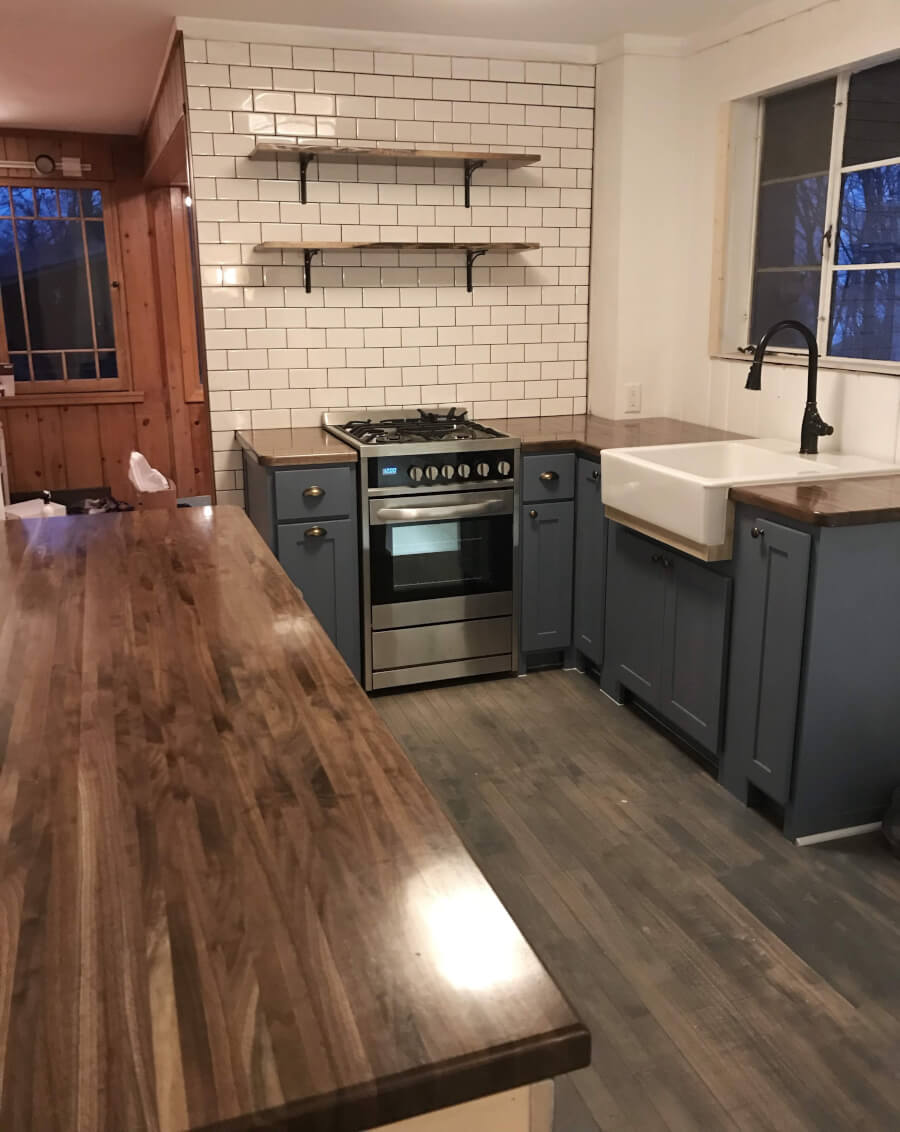
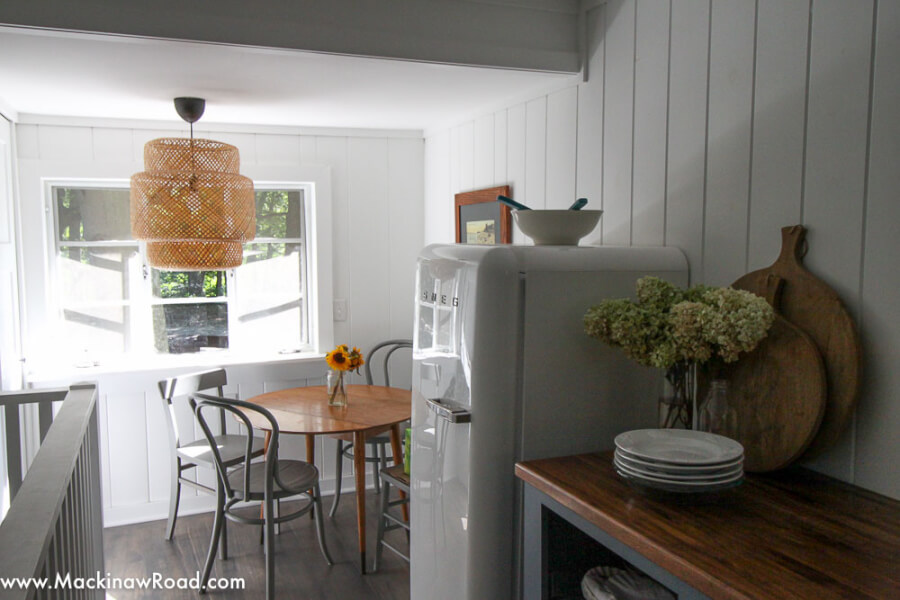
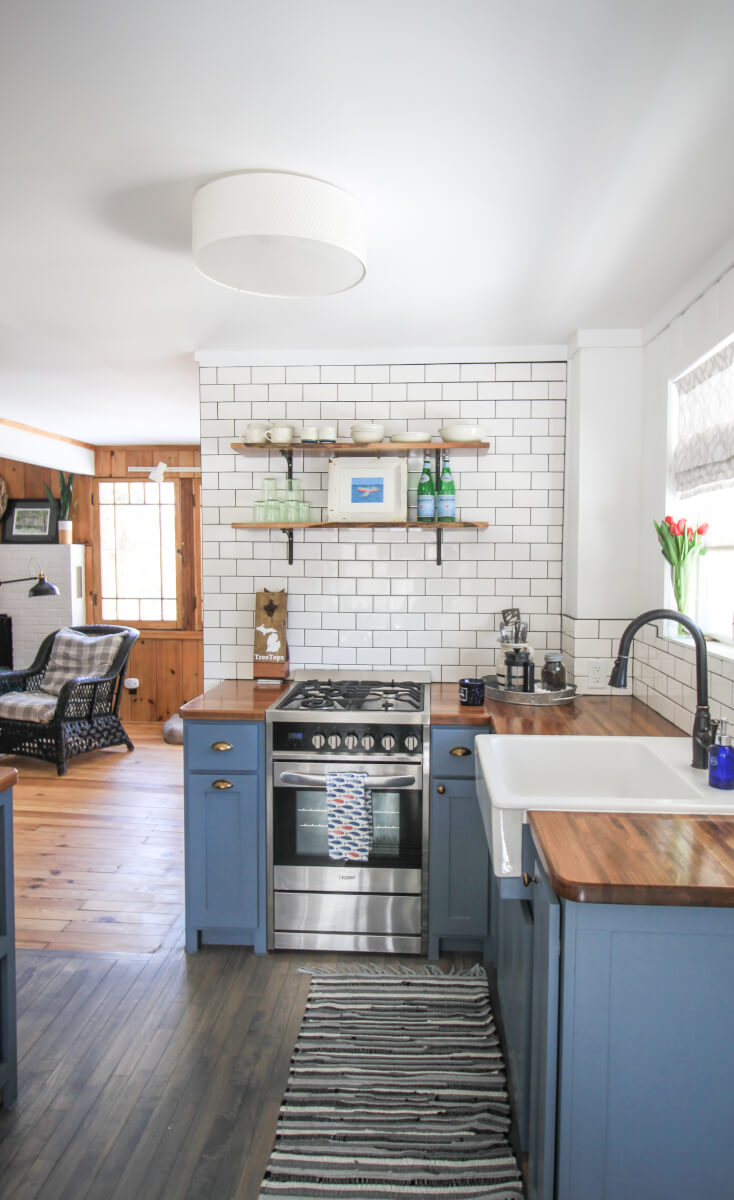
We installed butcher block countertops in our Beach Cabin kitchen. I *think* we are supposed to maintain it in a specific way that I have already forgotten. Nonetheless, apart from a few uneven patches that were there from the beginning, it has held up remarkably well. Is it advisable to use butcher block without a cutting board? Not really. Unless that’s the aesthetic you’re going for, in which case, go for it! The counters will inevitably show cut marks, so in our home, I find myself constantly reminding everyone to use a cutting board. Thankfully, we haven’t experienced any ring marks from glasses or coffee spills. Moreover, the lack of chipping with butcher block countertops is another significant advantage.
Countertop Options: Quartzite
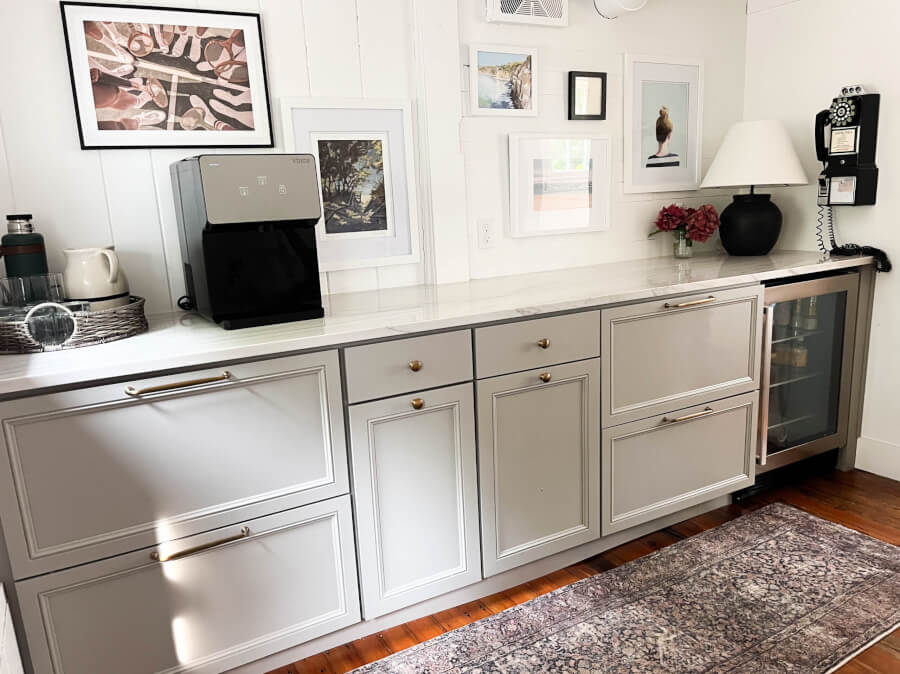
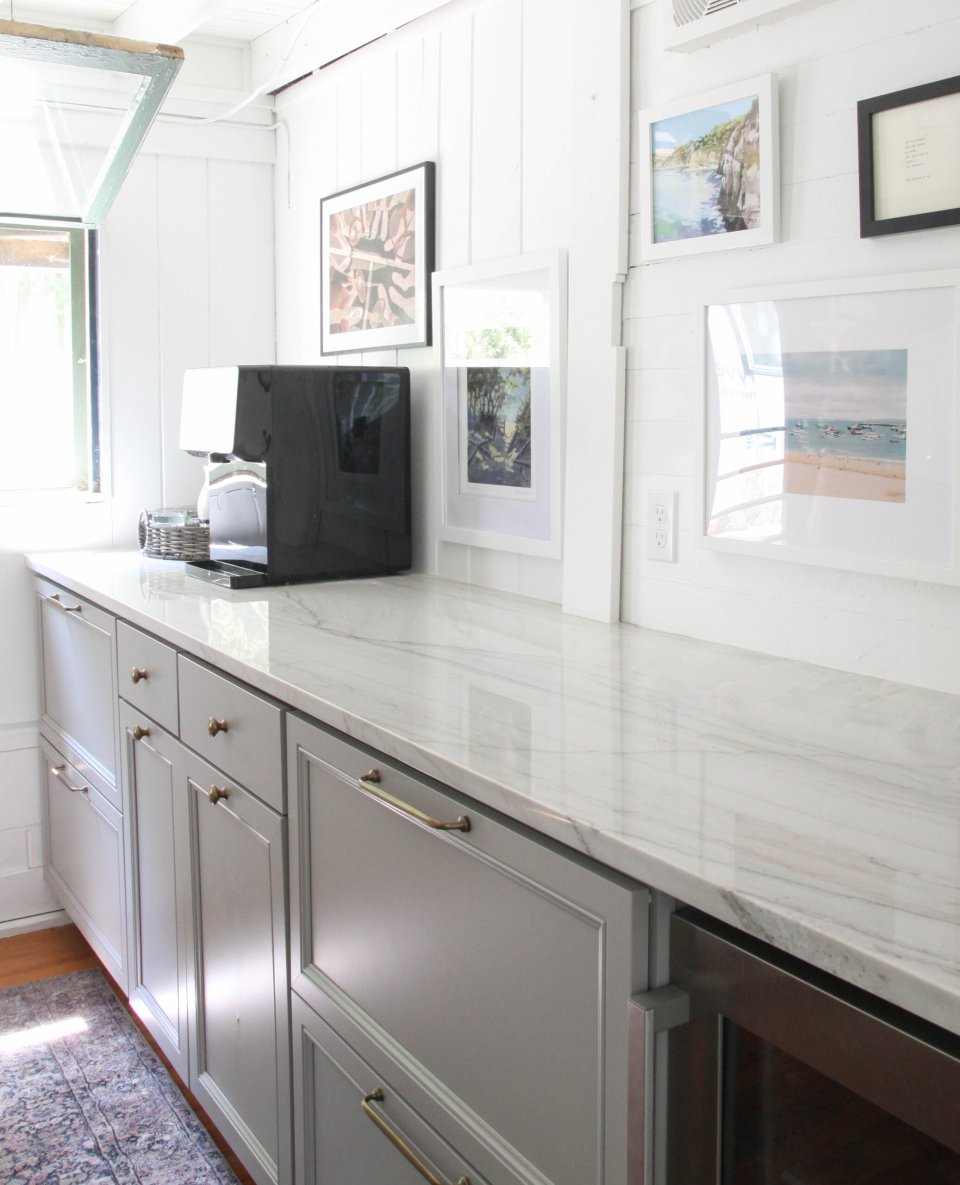
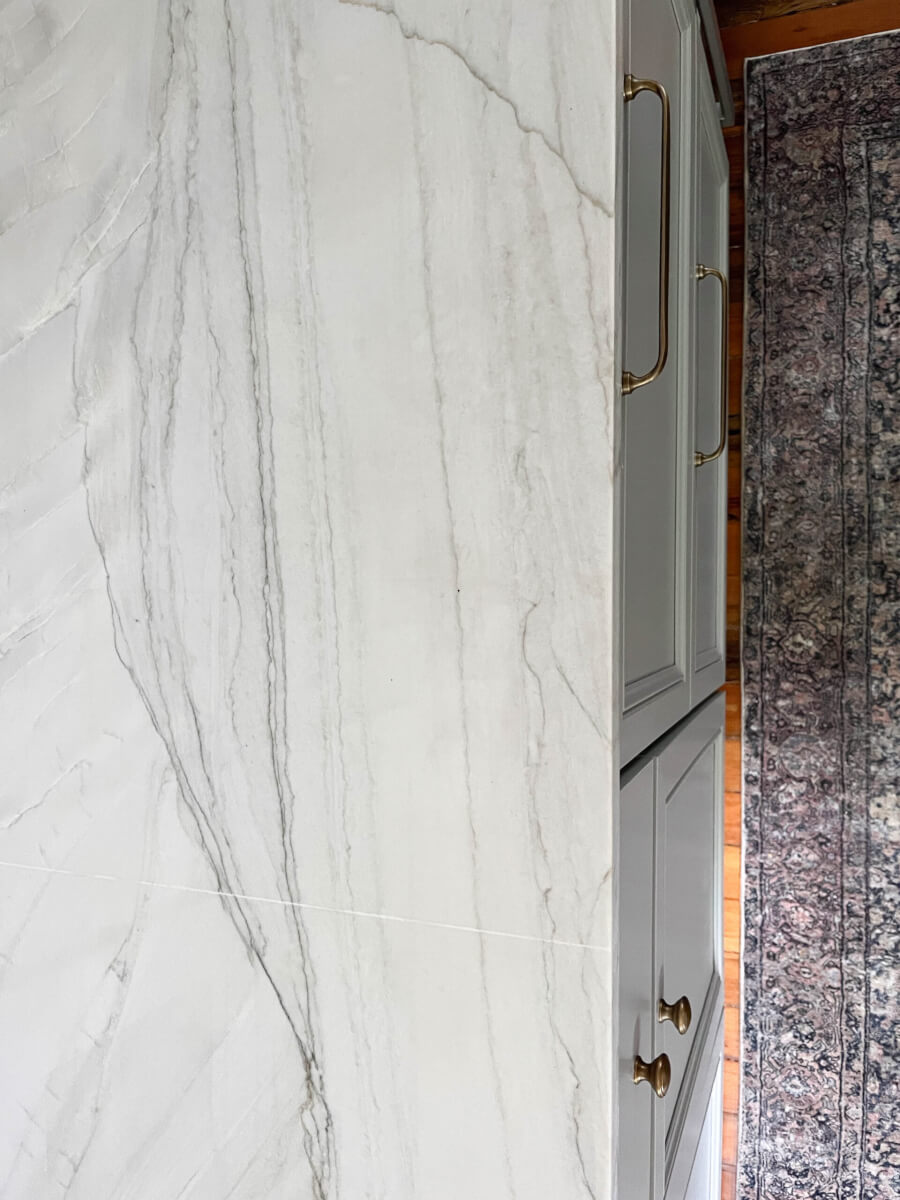
Quartzite, a stunning natural stone, is truly beautiful. Ours is Mykonos quartzite, and we also considered Taj Mahal quartzite. I was thrilled when we selected our slab, but I have been somewhat disappointed with its performance. Just to clarify, this is not universally true for all quartzite slabs. What I’ve previously heard about quartzite is that it is more durable and easier to maintain compared to marble. I believe that is accurate in terms of etching and chipping. However, our slab tends to show every drink ring from condensation, and it absorbed a stain from olive oil. Although we had it sealed by the installers and then resealed ourselves, it continues to display marks. Clearly, this slab might need several more applications of sealer. In the meantime, I find myself constantly cleaning up spills as they happen. Lol.
Countertop Options: Quartz
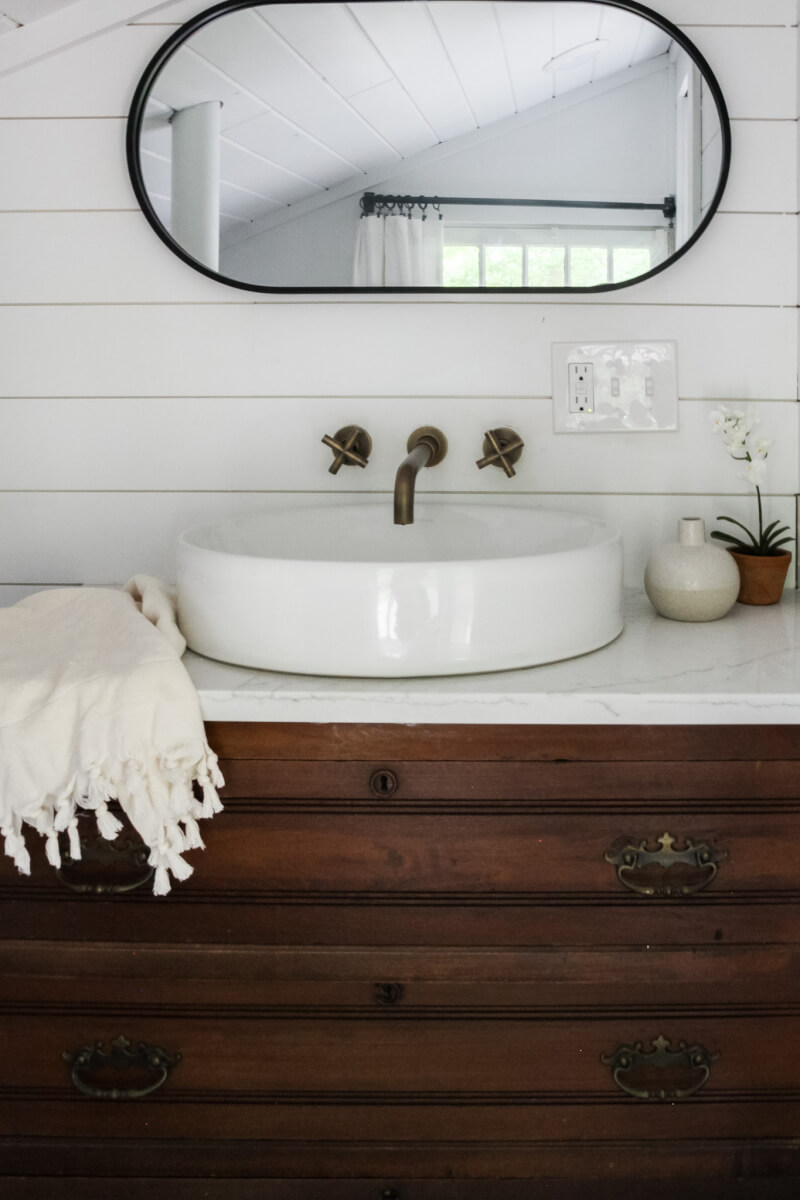
Quartz is incredibly durable! We have quartz countertops in our loft bathroom (the marble we initially chose broke during cutting). Although it doesn’t see heavy use, it still looks just as pristine as it did on day one. I wish I could recall the exact type of quartz we selected because its subtle beauty is captivating (it is the closest match to marble that you can likely find). I wholeheartedly recommend quartz countertops for busy families seeking low-maintenance options, as they eliminate much of the worry associated with kitchen surfaces, especially when you have budding chefs in the family. They are also fantastic for entertaining, making cleanup a breeze. I definitely advocate for quartz as a countertop choice.
That’s All for Now!
I hope this information helps you in selecting countertops for your own home. If you have any experiences with the options listed above, please share your thoughts in the COMMENTS section. I would love to explore dolomite countertops in the future, but currently, I don’t see any other areas in our Colonial Home or Beach Cabin that need new countertops.




